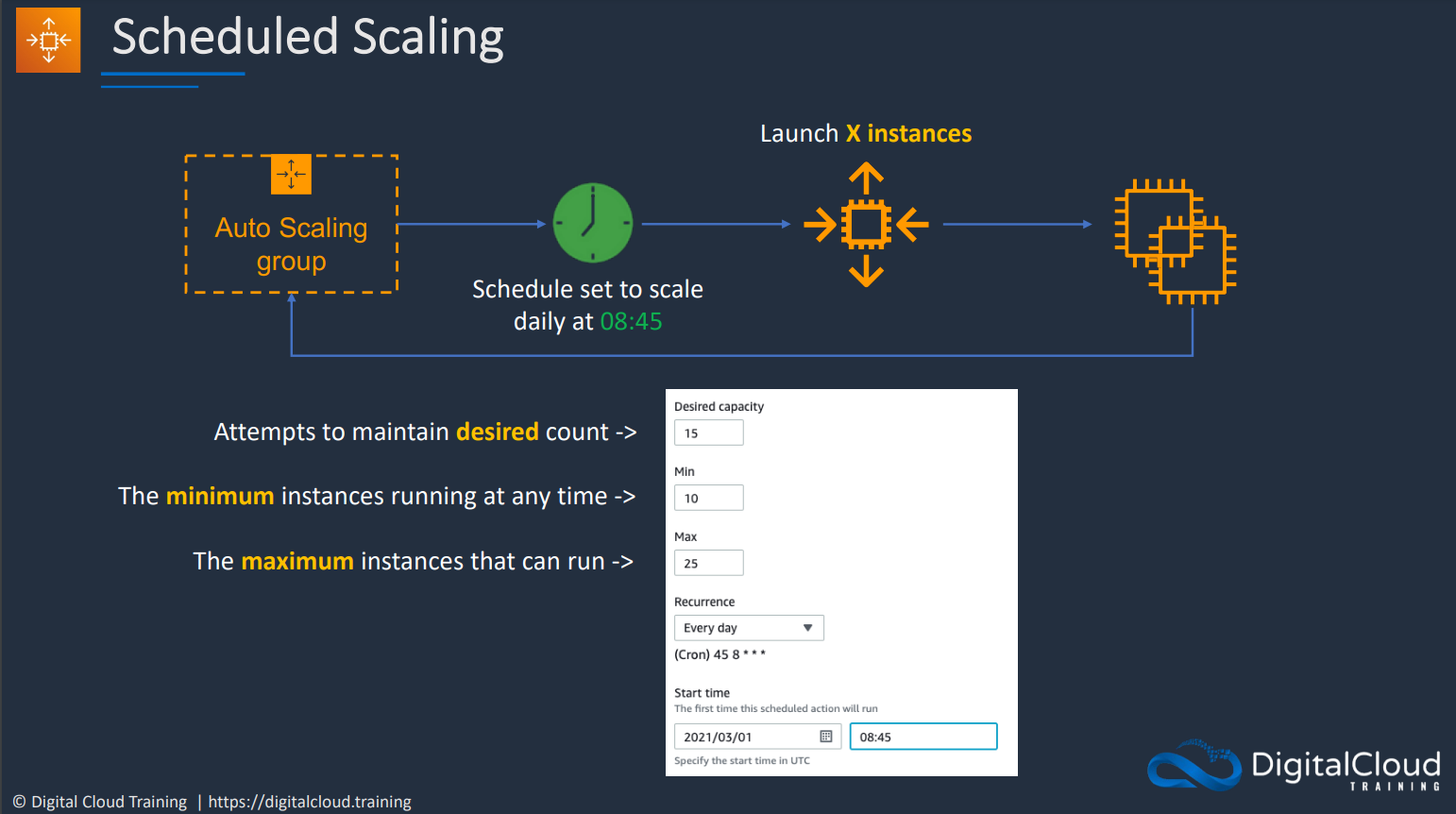# Auto Scaling Group (ASG)
#aws #cloud #compute
A service from AWS to spin up EC2 instances as well as remove them automatically according to the situation.
For example the ASG can be hooked up to an Cloudwatch-Alarms when the EC2 instance status check fails. Then CloudWatch then notifies the ASG which spins up a new instance.
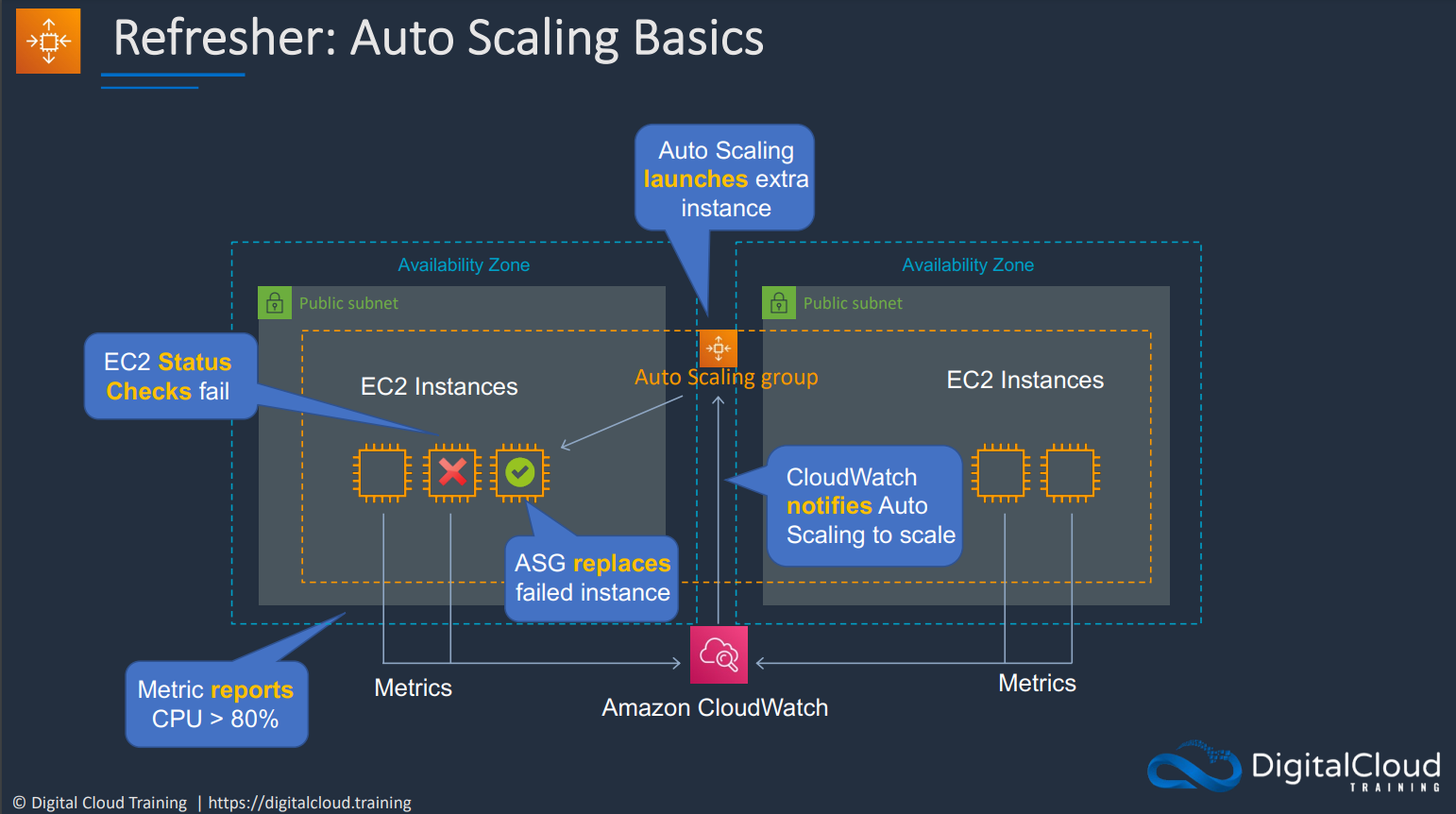
# Scaling Processes
• Launch – Adds a new EC2 instance to an Auto Scaling group
• Terminate – Removes an EC2 instance from the group
• AddToLoadBalancer – Adds instances to an attached ELB or TG
• AlarmNotification – Accepts notifications from CloudWatch alarms that
are associated with the group’s scaling policies
• AZRebalance – Balances the number of EC2 instances in the group
evenly across all of the specified Availability Zones
• HealthCheck – Checks the health of the instances and marks an instance as unhealthy if Amazon EC2 or Elastic Load Balancing tells Amazon EC2 Auto Scaling that the instance is unhealthy
• ReplaceUnhealthy – Terminates instances that are marked as unhealthy and then creates new instances to replace them
• ScheduledActions – Performs scheduled scaling actions
• Cooldowns – Used with simple scaling policy to prevent Auto
Scaling from launching or terminating before effects of previous
activities are visible. Default value is 300 seconds (5 minutes)
• Termination Policy – Controls which instances to terminate first
when a scale-in event occurs.
• Termination Protection – Prevents Auto Scaling from terminating
protected instances
• Standby State – Used to put an instance in the InService state into
the Standby state, update or troubleshoot the instance
• Lifecycle Hooks – Used to perform custom actions by pausing instances as the ASG launches or terminates them.
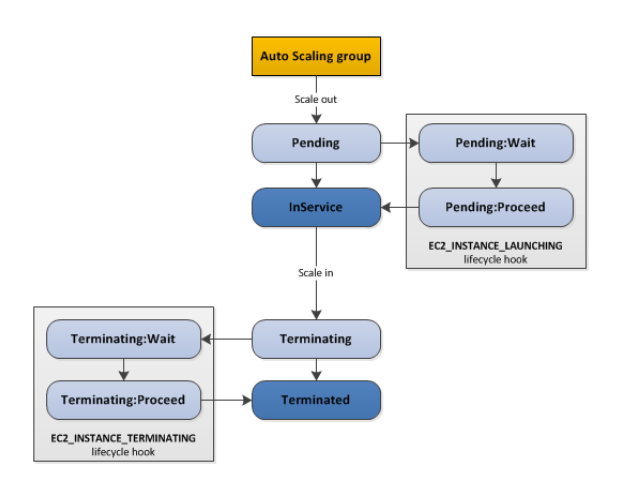
# Dynamic Scaling
The ASG could be programmed to be certain metrics, or some conditions.
# Target Tracking
This method will use certain metrics to apply ASG actions. There are 4 metrics which are:
• ASGAverageCPUUtilization—Average CPU utilization of the Auto
Scaling group
• ASGAverageNetworkIn—Average number of bytes received on all
network interfaces by the Auto Scaling group
• ASGAverageNetworkOut—Average number of bytes sent out on all
network interfaces by the Auto Scaling group
• ALBRequestCountPerTarget—Number of requests completed per
target in an Application Load Balancer target group
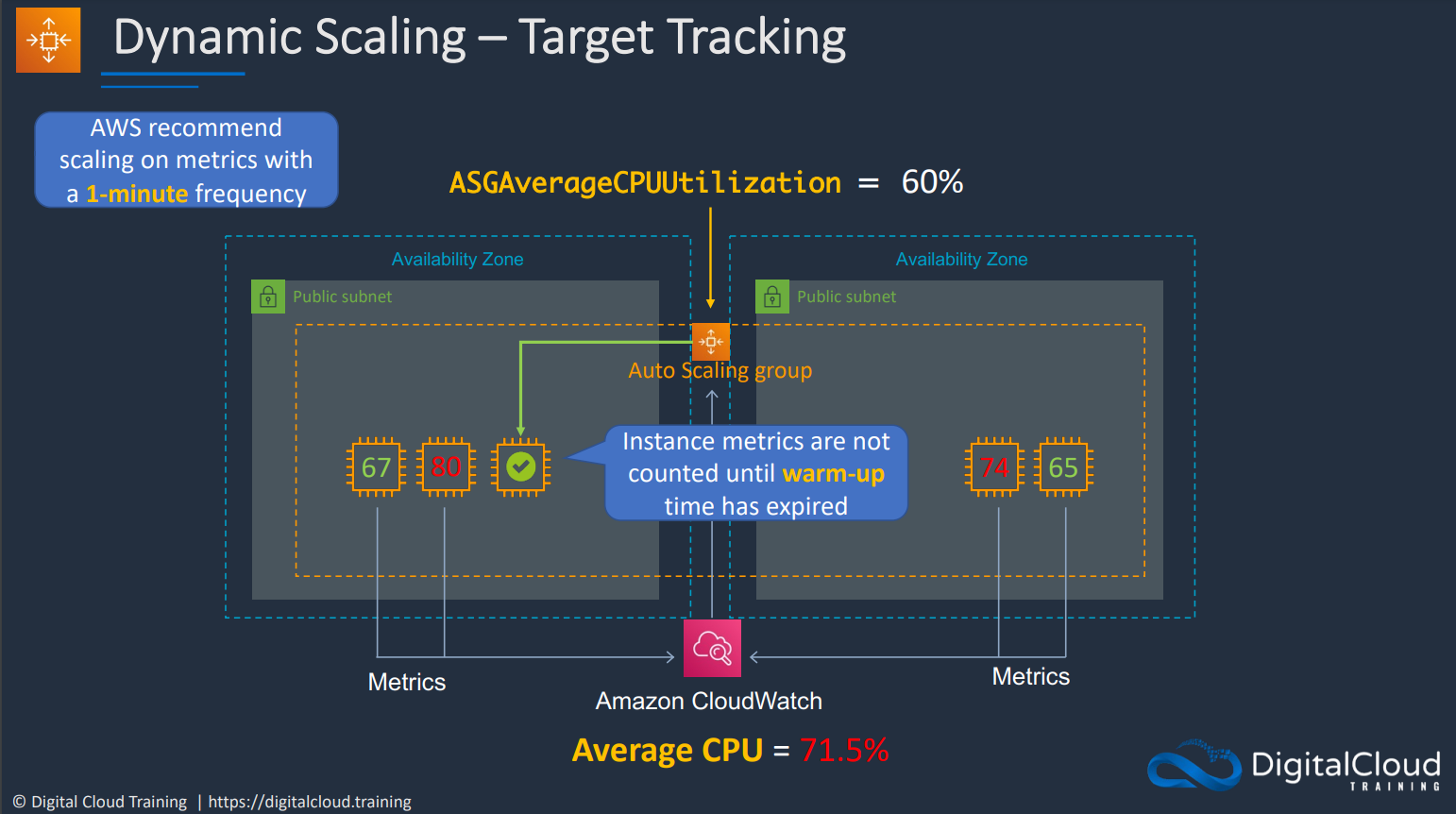
# Target Tracking with SQS
You can use SQS to emit a custom metric to cloudwatch to scale the asg ie. to provision more instances according to the pending messages.
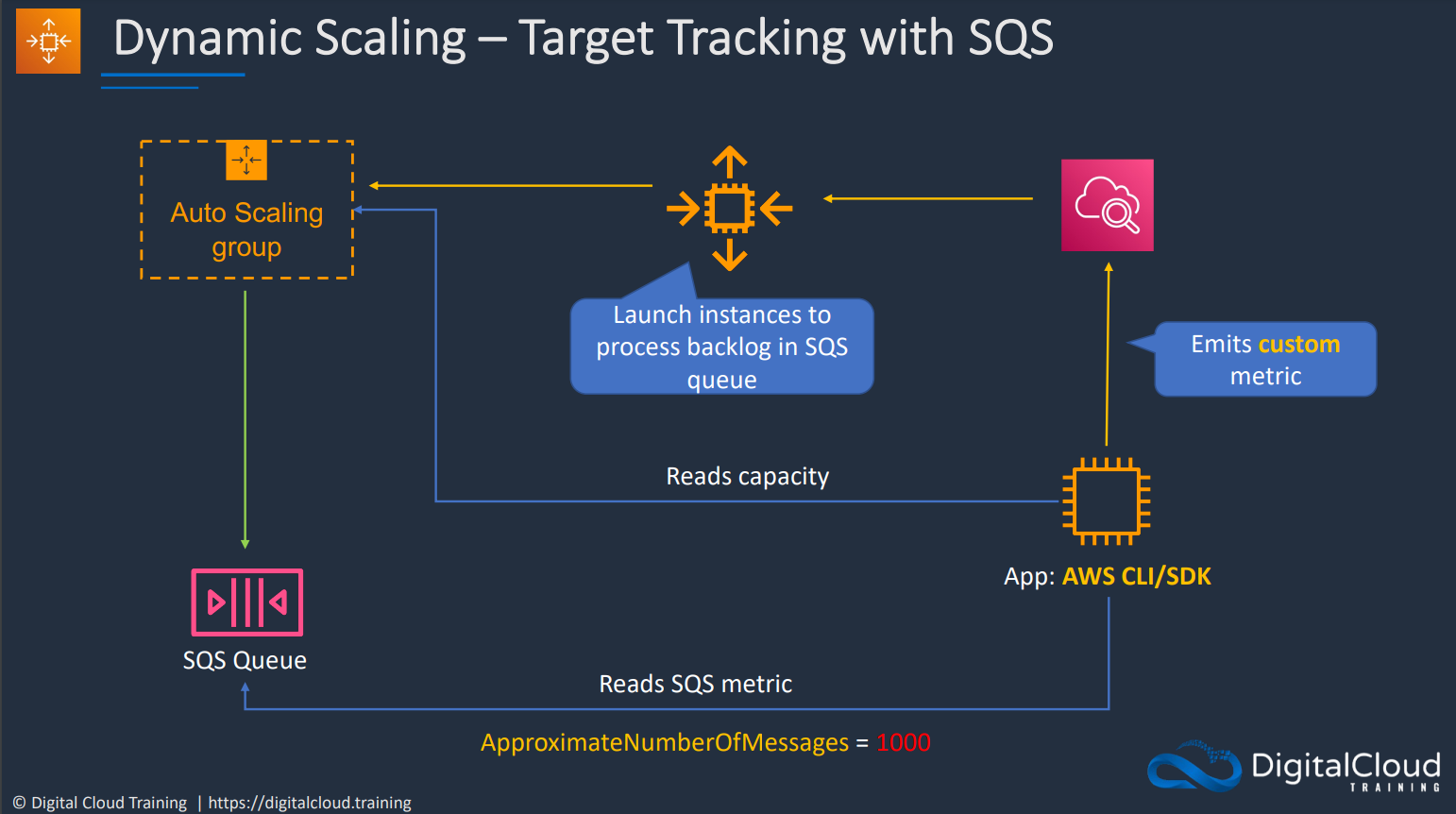
# Simple scaling
It scales according to the trigger if the alarm goes off after a simple metric set.
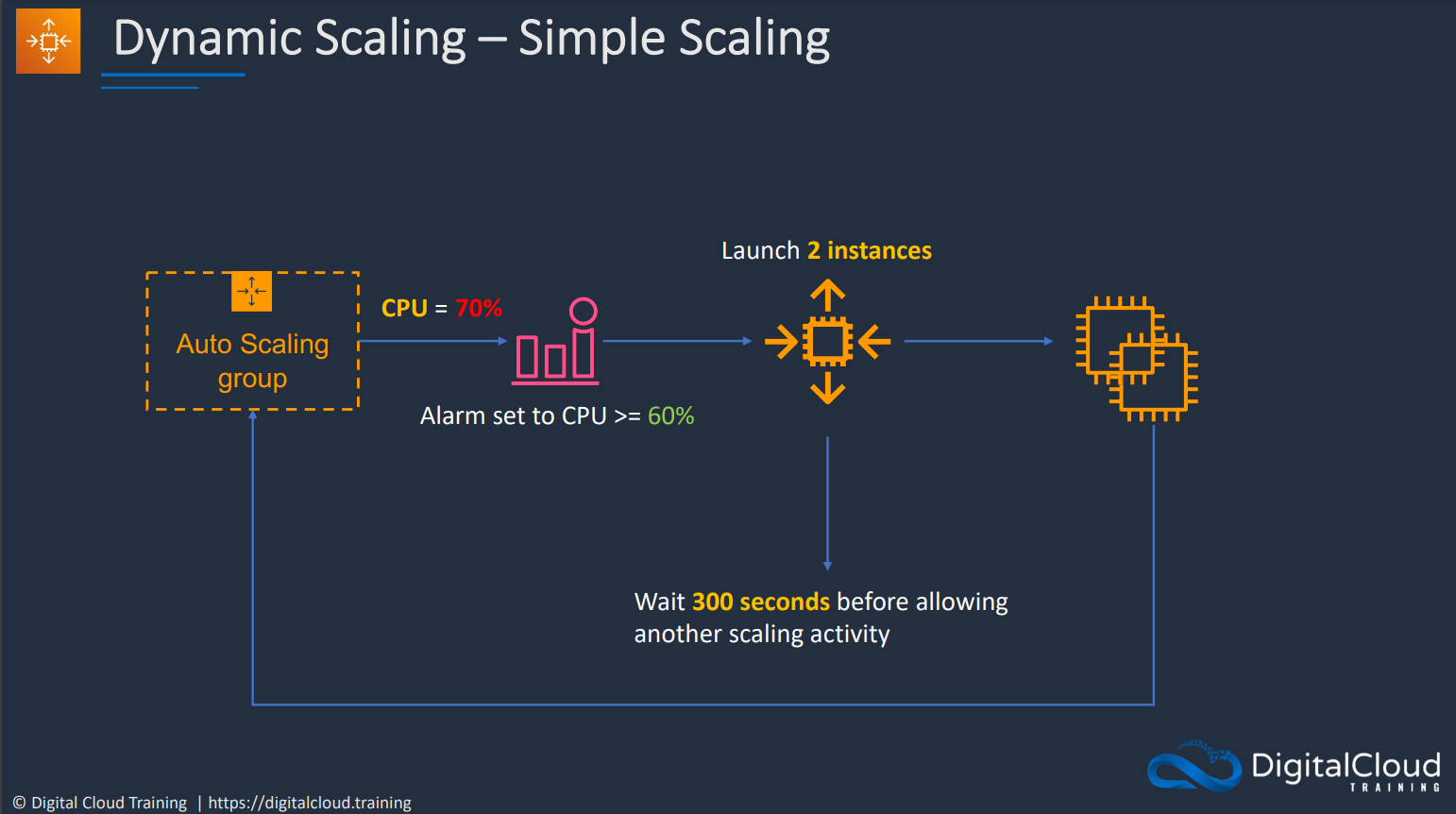
# Step Scaling
Will scale instances with variable alarm trigger, ie. will launch more instance if the metric is higher. Ie the size of alarm breach.
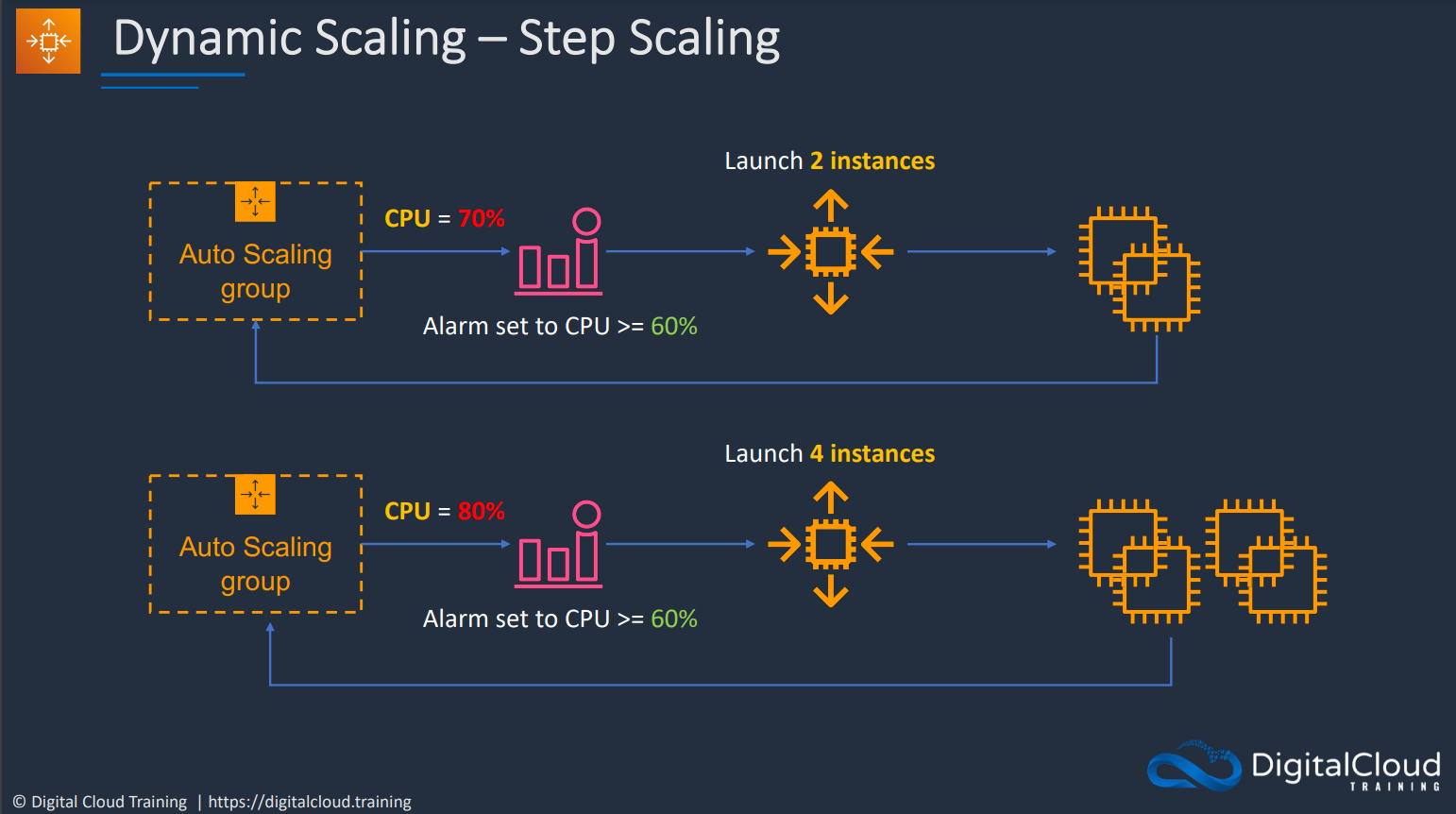
# Scheduled Scaling
We can also use scheduled scaling to roll out or roll down instances in certain times.
